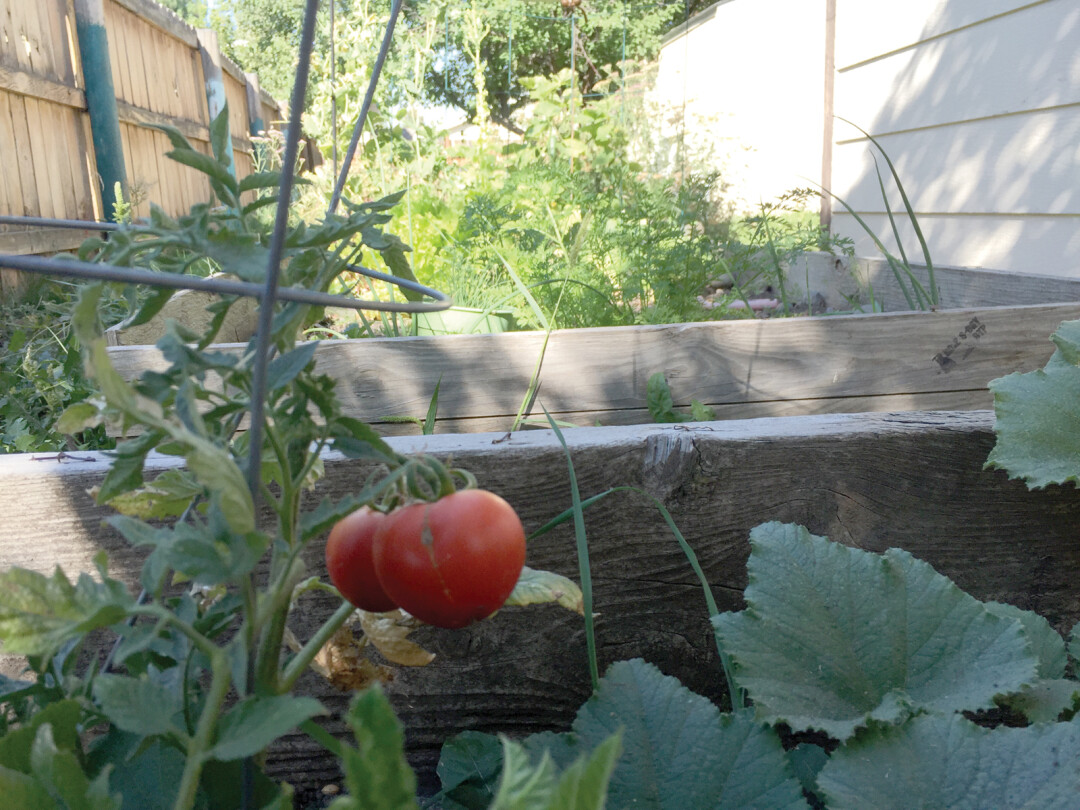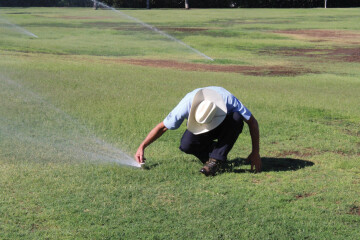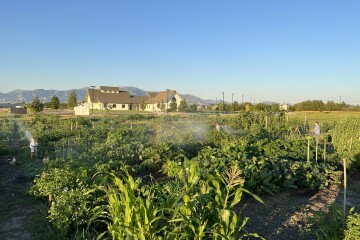Late Summer Backyard Gardening Fun
If you are finding it hard to make time to get the family outside in the midst of the back-to school blitz but before summer winds down, look no further than you own backyard.
Kids are natural gardeners and love playing in the dirt. But moving dirt around is just one of many reasons that gardening is a fun, family-friendly outdoor pursuit that is easy on the budget and does not require another road trip. This September, before the leaves fall and the snow flies, try some of the activities below and turn late summer gardening into a great opportunity to connect your kids to their environment, food and the water needed to make things grow.
For your existing plants, help your kids become water detectives and hunt for clues that indicate over or under watering. The top four signs of over watering include leaves that turn a lighter shade of green or yellow, wilted young shoots, excessive plant growth, algae, mold or mushrooms on or around the plants. The top four signs of under watering include older leaves that turn yellow or brown and drop, leaves that are dull, wilted or drooping, leaves that curl, stems or branches that die back.
Even though many Summer plants have finished blooming for the season, there is still much that can be done this time of year to ensure beautiful Spring flowers next year or, for those vegetable gardeners, fresh greens for the Fall table. Replacing a small section of turf grass with a flower or vegetable garden will reduce the amount of water used and money spent on the water bill.
Spark your kids’ interest in gardening by converting a small section of your lawn to a small landscape bed or vegetable garden that belongs to them as much as age and interest will allow. The purchase of a few decent tools that are theirs can also go a long way to passing along the gardening bug. Kids can help pull weeds, till soil and get the garden ready for the new plants and bulbs.
Enlist your younger family members’ help in choosing the right plants. Check out MSU Extension’s MontGuide for choosing biennial and perennials for Montana gardens for a complete list of what flowers to plant in the Fall. Blue Flax, Blazing Star, Coral Bells, Tulips, Ice Poppies, Lilies, and Peonies make for a showy Spring garden with minimal or no supplemental watering requirements.
There are also vegetables that grow well in our area and can be planted this time of year for instant gratification on your dinner table. A few options include radishes, beets, Swiss chard, spinach, and lettuce. They can be started indoors or planted directly in your garden.
Check the time required for the seeds to reach maturity and when to anticipate the first frost to make sure you are not planting too late. Task the kids with finding this information on the seed packets or elsewhere and mark it on the calendar. The Old Farmer’s Almanac is a great resource. Spreading a heavy hay mulch can reduce water needs and protect against cooler temperatures. Eating what your children grow is also a great way to foster healthy eating habits.
Adding organic materials such as compost can greatly increase your soil’s ability to absorb and store water. Plus, it’s a great excuse for kids to dig! To make your flower or vegetable garden water wise, pick up some compost to add to the garden. Work together to spread the compost around your plants— 2 to 3 inches thick. You can also make your own compost at home from leaves, vegetable peelings and coffee grounds.
We cannot control how hot or dry it is, but we can control how efficiently we water. Using water wisely not only saves you money, but it’s the right thing to do to preserve this limited resource.
Removing a section of turf grass to make room for a small flower or vegetable garden opens the door to using drip systems which reduces water usage by about fifty percent. Soaker hoses are also an easy and inexpensive option. This is a great opportunity to talk with your kids about the fact that a lot of water is lost when using overhead sprinklers as a result of evaporation and runoff and that water is best applied to plant roots either by drip irrigation or hand-held hose. By doing so, you waste less water and use less water, while keeping your plants healthy.
Even if your family opts out of planting perennials or a vegetable garden, involving them in heavily mulching existing root vegetable gardens and flower beds and watering before a freeze is good, not so clean fun and a great water conservation technique. Have your kids mulch some areas and not others and see if they can see and feel any differences in the soil moisture.
Another option is to help your child hunt for and collect seeds from native wildflowers to plant next year, use them in a collage or drawing, or make a seed identification book. Ask your child to find information about the flower or plant that produced the seeds including a drawing, bloom period, sun and shade requirements, preferred soil type, watering needs and whether it is pollinator and habitat friendly and include this information in their seed identification book.
Gardening with your children encourages water conservation inspirations and teachable moments- and kids are infinitely curious. Bringing it all together in your own backyard is easier than you might think and is certainly worth the effort to foster connections to our environment, food and water supplies that will last a lifetime.


